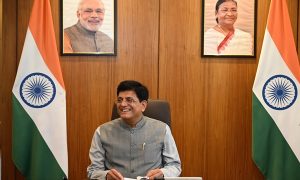UNESCO’s Convention for Safeguarding of the Intangible Cultural Heritage has inscribed the Vedic Chanting Ritual as an unembodied ethereal legacy. This living tradition was included for its inherent mysticism and beauty way back in 2008 but few know about this splendor.
The Vedas are one of the world’s oldest surviving cultural traditions, revered by Hindus as the fundamental source of knowledge and the sacred foundation of their religion. The Rig Veda is an anthology of sacred songs; the Sama Veda is a musical arrangement of hymns from the Rig Veda and other sources; the Yajur Veda is a collection of prayers and sacrificial rituals used by priests; and the Atharva Veda is a collection of hymns from the Rig Veda and other sources (includes incantations and spells). The Vedas also offer insight into the history of Hinduism and the early development of several artistic, scientific and philosophical concepts, such as the concept of zero. Only 13 of the approximately 1,000 Vedic recitation branches have survived, despite the Vedas continuing to play an essential part in current Indian society.Moreover, four noted schools – in Maharashtra (central India), Kerala and Karnataka (southern India) and Orissa (eastern India) – are considered under imminent threat.
The Vedas’ lyrics were traditionally chanted during sacred rites and recited regularly in Vedic communities, and they were expressed in the Vedic language, which is descended from classical Sanskrit. This tradition is valuable not just because of the rich substance of its oral literature, but also because of the innovative tactics used by Brahmin priests to keep the texts intact through thousands of years. Practitioners are taught complicated recitation techniques based on tonal accents, a unique way of pronouncing each letter, and precise speech combinations from childhood to ensure that the sound of each phrase is preserved. Chanting was primarily utilised to aid in the memorization of lessons and as a means of expressing dedication. It is also known as oral prayers and is a common technique to exhibit devotion. Chanting is a receptive technique that is neither active nor passive. Chanting necessitates deliberate effort. Chanting has been practised in different faiths and religious institutions for a long time, including Buddhism, Vedic Hinduism, Christinaity (orthodox), Judaism, and even Paganism.
The Vedas, also known as the Vedic scriptures, are a collection of religious texts composed in Sanskrit between 1500 and 1000 BCE.
The Vedas contain hymns, petitions, and religious eulogies that symbolise the Vedic Hindu religion, in addition to liturgical material and mythological narratives.
In Sanskrit (Hindu Vedic chanting), chanting or recitation of prayers takes the form of a simple praise or eulogy called stuti, sukta, or stava. Since the presence of Vedic literature, which dates back to the Iron Age, these chants are regarded to be the oldest unbroken oral traditions. The entire concept of Vedic Chanting can be divided into two categories: tone and recitation (Patha).
Udatta, Anudaatta, Svarita, and Deergha Svarita are the four main tones used in Vedic singing.
The styles of hymnal recitation are known as pathas.
Amhita, Padha, Krama, Jata, Maalaa, Sikha, Rekha, Dhwaja, Danda, Rathaa, and Ghana are the eleven types of recitation.
India has preserved multiple sacred traditions, passed down as living legacy and Vedic Chanting is one of them. India has preserved multiple sacred traditions, passed down as living legacy and Vedic Chanting is one of them.




























 WhatsApp us
WhatsApp us